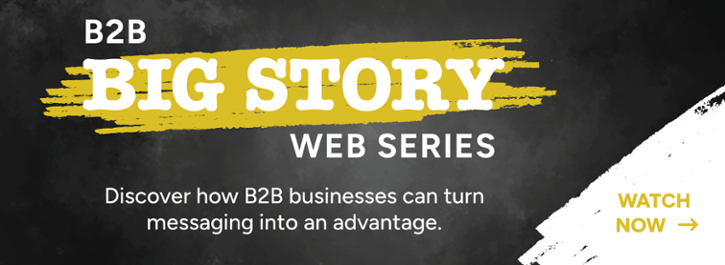
Differentiated Marketing: 4 Ways To Stand Out From the Crowd
How can you reach more people while staying distinctively on brand? It seems evident that the answer lies in being different enough to stand apart. However, the concept of differentiation in marketing can touch several layers of meaning.
On one hand, there’s the idea that a unique brand and message will differentiate you by helping you stand out from competitors. This type of differentiation should always be top of mind with any sales and marketing efforts.
But there’s a distinction between brand uniqueness and a differentiated marketing strategy, also known as segmented marketing. To truly become competitive in your industry, it’s essential to understand what differentiated marketing is and how you leverage it to increase awareness and boost your revenue.
What Is Differentiated Marketing?
Differentiated marketing occurs when a company creates campaigns that attract multiple audiences, demographics or marketing segments. Customizing campaigns and messaging to different buyer personas can help attract more customers, stand out from the competition and increase brand awareness.
To understand how differentiated marketing plays out in real life, consider some real-world examples.
1. Coca-Cola
Coca-Cola is one of the most widely known brands across the globe. While a broad audience makes up Coca-Cola’s consumers, the brand positioning changes depending on the target segment. For example, celebrity collaborations appeal to a younger, pop-culture-aware audience. At the same time, health-conscious consumers are more likely to buy from ads that feature low-calorie or low-sugar offerings.
2. Bumble
Bumble is a popular dating app where women initiate conversations. However, because of the app’s success in forming user connections, Bumble unveiled a new offering to target people interested in developing new friendships based on common interests. And the research backs them up – a survey reported that 66% of Gen Z respondents say they met their friends online. Bumble also launched Bumble Bizz, marketed to business owners to find talent and build strong working relationships with freelancers.
3. ThredUP
ThredUP is an online thrifting brand that sells gently used clothes for discounted prices. ThredUP employs several product offerings and marketing messages depending on the segment. First, they target thrifty, frugal consumers with messaging about reduced pricing on clothes. Environmentally conscious buyers learn about sustainable practices and how ThredUP helps minimize waste. Finally, the LUXE offering targets a group interested in luxury brands by selling top-condition designer pieces.
4. HubSpot
HubSpot is an all-in-one platform that helps businesses manage sales, marketing, content creation, operations and customer service. HubSpot segments its customers into groups based on their needs, company size and budget with a strong potential for upselling. Small companies and individual consultants or freelancers can use the suite of free tools to get a feel for the platform, and possibly upgrade someday. HubSpot targets this segment by offering helpful tools for free, which is an automatic ROI for someone on a budget. For mid-size and large companies looking to scale, HubSpot markets a CRM that helps solve common growth challenges within the same platform.
5. UpWork
UpWork is a platform that connects businesses with freelance talent. They have several distinct segments to reach and have created different value propositions for each. For freelancers, UpWork markets the opportunity to easily find job listings and opportunities.
For the business audience, UpWork delivers vetted, quality freelance talent that can help an organization achieve its most important goals. UpWork’s business target audience is segmented even further: One group is the small to midsize businesses that need to hire talent for certain roles or projects, where the company’s staff hires on a self-serve basis. The second group is enterprise-level companies that require a large-scale talent recruitment process.
Other Marketing Strategies to Consider
While differentiated marketing can work for lots of companies, it’s not the only strategy that can increase revenue. Here are some other methods that can work well:
- Concentrated Marketing: Concentrated marketing takes the opposite approach from differentiated marketing. A company taking a concentrated approach will zero in on a highly specific niche and market only to that niche.
- Undifferentiated Marketing: This tactic, also known as mass marketing, involves a singular marketing strategy that targets the broadest possible audience.
Before embarking on a differentiated marketing strategy, it’s important to consider your company mission, product and target market. Undifferentiated, concentrated and differentiated marketing can all work well depending on unique factors.
For example, if you are a new company just starting out, perhaps a concentrated approach is one to begin with to kickstart growth, with the potential to incorporate more layered segments down the road.
So, if you have decided that a segmented strategy is right for you, how do you create a stand-out approach to win customers?
1. Know Your Audience
The foundation of a differentiated marketing strategy involves:
- Understanding who your ideal customer is
- Identifying their pain points
- Showing how your products and services can help.
When you dive deep into your customer profile, different personas will emerge, and those personas will become buyers for various reasons. This may be especially true if you have multiple products or service offerings.
If you have just one product or service, think about different reasons why someone might gravitate to your brand. Do these reasons all make sense with a single persona, or is there another segment to reach with a different solution to their pain points?
After thoroughly building your customer profiles, you can establish your market segments.
2. Create a Strong Message for Each Segment
Once you have identified your segments, you need to create strong messaging for each one. Think about how you solve the problem for each group, then build a unique solution for each.
For example, say you run a downtown cafe that attracts remote workers. These remote workers like to bring their laptops to the cafe during work hours. They enjoy the free Wi-Fi, tasty food and quiet atmosphere to get their work done. So, any marketing campaigns targeted to this customer profile should include these selling points.
However, if the same cafe wanted to target professionals who physically visit their downtown offices, highlighting lunch specials, quick service and their early-hours breakfast offerings would be a good idea. Why? Most in-office workers will be looking for a quick coffee and breakfast before work and will likely want to grab a convenient, decently priced meal during their lunch break.
Considering this example, you can see how your brand value will look different depending on the target audience. Therefore, your messaging and campaigns must promote varying solutions for each customer type.
3. Define Your Place Among the Competition
Every marketing strategy needs to stand out from the competition. But this competitive mindset must carry through to each segment. Ask the following questions:
- What are competitors doing to attract a specific group?
- What messaging do other businesses use?
- How can your brand serve the customer base better or differently?
- Is there a niche no one else has pursued yet?
Researching other industry players will help you discover ways to stand out to consumers, define your competitive edge and sharpen your messaging for each target audience.
4. Choose the Right Channels
Now that you have defined your customer profiles, developed segment-specific messaging and analyzed your competition, it’s time to choose your marketing channels. Remember that the channels you choose may differ from group to group.
For instance, one segment may skew older, so you may consider using TV ads, print advertisements or email. A younger demographic may respond better to social media ads on apps like Instagram or TikTok.
Another example is a B2B audience vs. a B2C audience. A B2B segment may be more likely to begin their buyer journey on platforms like LinkedIn, at trade shows or conferences, or with email campaigns. A B2C audience may respond better to social media or PPC campaigns.
However, some channels may work for multiple segments. For example, podcasts can be a highly effective channel for both B2B and B2C, as can SEO, social media and live events.
Consider different channels depending on where your customers are in the buyer journey. Social media ads and SEO are excellent marketing tactics for early buyer journey awareness. However, upselling current customers may require personal outreach from your customer service team.
Ultimately, you need to treat every segment as unique. Do your research, prepare to iterate on your marketing strategy when things aren’t working well and double down on the things that do. If you pay attention to your segments, you will drive buyers to become loyal customers.
Olivia Williams
Eliminate Hit-or-Miss Marketing Moves
Get advice, tips, tools and guidance to generate more leads for your company in this weekly email newsletter.


The Secret to Generating High-Quality Leads for Your Sales Team
The Secret to Generating High-Quality Leads for Your Sales Team

Eliminate Hit-or-Miss Marketing Moves
Get advice, tips, tools and guidance to generate more leads for your company in this weekly email newsletter.













